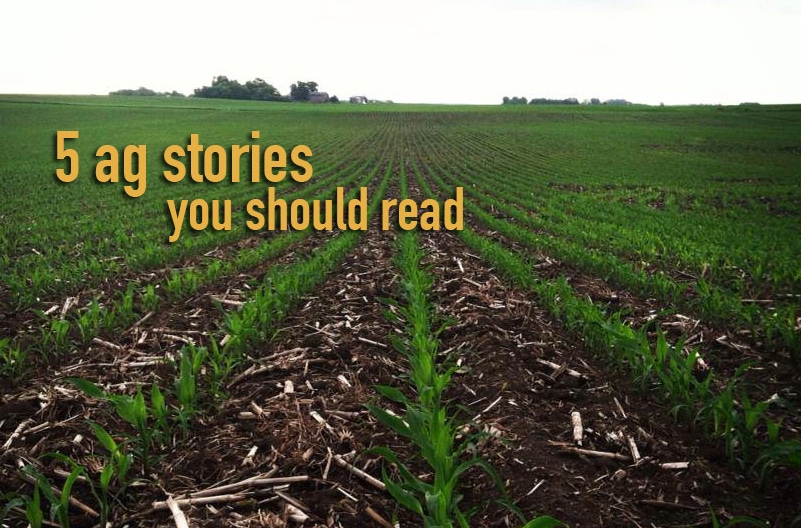
5 Agriculture stories to read, July 3, 2014
This installment of 5 Agriculture stories to read offers information on corn diseases, as well as white mold. Also read tips on replanting flooded land to keep soil in condition, and see photos to help diagnose nutrient deficiencies. Finally, as we celebrate Independence Day, enjoy the Dodge Ram Super Bowl commercial, "Farmer."

1. Leaf, bacterial diseases in corn. Weather conditions have been favorable to corn diseases, and many have been reported and confirmed in Nebraska. The University of Nebraska, Lincoln Extension offers photos, videos and management information for diseases, including Northern corn leaf blight and bacterial diseases.
Bacterial diseases in corn continue to be confirmed and reported in fields around the state, especially in fields where corn was wounded during recent inclement weather. In particular, Goss's bacterial wilt and blight, bacterial stalk rot and bacterial leaf streak have all been confirmed. Current moderate to warm weather conditions will continue to support spread and development of these diseases.
Learn more about corn diseases from UNL.
2. White mold risk. In cool, wet years, white mold in soybeans can become a risk. Wet conditions in 2014 support development of the disease, but the temps don’t. “If a cool and wet trend continues throughout soybean flowering, then the risk of white mold will be elevated,” says Carl Bradley, University of Illinois
Overall, the highest level of white mold control will be achieved when several management practices are integrated (i.e. choosing the most-resistant varieties, utilizing recommended seeding rates, applying a foliar fungicide, and applying a biocontrol product). Get more information about white mold and management of this disease (pdf).
Read more about white mold risk and management from University of Illinois.
3. Replant flooded land. After so much rain in June in the Upper Midwest, many fields were left flooded and crops drowned out. Matt Fenske, Millborn Seeds, says it’s important to plant that flooded land to reduce erosion and keep soil healthy.
Quick growing forages or cover crops are a good solution. Along with the benefits of maintaining soil health, weed and erosion control; varieties can be selected to fix nitrogen, increase water infiltration and alleviate compaction. "The overall objective is to make the right restoration choices this summer so that the land makes a healthy return next spring," Fenske said.
Read more about replanting flooded land to cover crops.
4. Crop nutrient deficiencies. Nutrient deficiencies in corn and soybeans can result from a number of reasons, but should be diagnosed and fixed as soon as possible regardless of the cause. Identifying deficiencies early on allows you to take a corrective course of action to minimize damage and increase your bottom line.
View photos of nutrient deficient corn and soybeans.
5. God made a farmer. There are many independences to be thankful for as we celebrate Independence Day. In thinking about those who contribute to our freedoms and independence, farmers should not be left out. Here’s one of my favorite reminders of the importance of farmers, the Dodge Ram Super Bowl commercial, narrated by Paul Harvey, “Farmer.”
 You should also read:
You should also read:
About the Author(s)
You May Also Like



